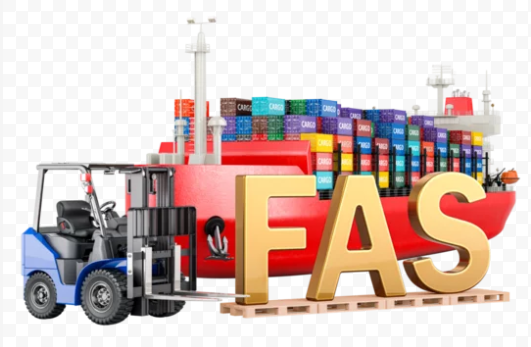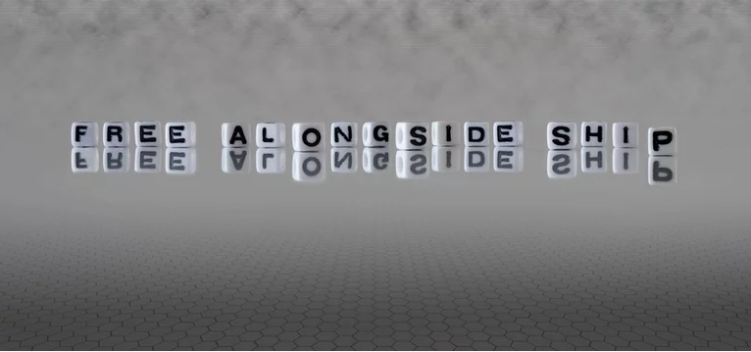What is FAS (Free Alongside Ship)?
Posted on: 23/10/2024

Here’s a detailed breakdown of FAS (Free Alongside Ship):
1. Seller’s Responsibilities
Under FAS, the seller's obligations are as follows:
Deliver the Goods Alongside the Ship: The seller is responsible for transporting the goods to the port of shipment and delivering them next to the ship nominated by the buyer. "Alongside" means the goods are positioned next to the vessel (either on the dock or on barges).
Clear the Goods for Export: The seller must complete all necessary export clearance procedures, including customs documentation and paying any export duties in the country of origin.
Bearing the Risk until the Goods Are Alongside the Ship: The seller bears all costs and risks up until the goods are delivered alongside the ship. This includes transportation to the port and any handling fees at the port.
2. Buyer’s Responsibilities
In FAS, the buyer assumes more responsibility compared to other Incoterms:
Loading the Goods onto the Ship: Once the goods are delivered alongside the ship, the buyer is responsible for loading the goods onto the vessel. This means the buyer must arrange and pay for the loading process.
Costs and Risks from Delivery Onwards: After the goods are alongside the ship, the buyer takes on all risks and costs, including maritime transportation, insurance, unloading at the destination port, and further inland transport if necessary.
Customs Clearance in the Importing Country: The buyer is responsible for completing all customs clearance procedures and paying any duties or taxes at the destination.
3. Delivery and Transfer of Risk
a. Delivery Alongside the Ship
The delivery is considered complete once the seller has delivered the goods next to the ship at the port of shipment. The ship can be in port or anchored nearby, with the goods placed on the dock or a barge.
b. Transfer of Risk
The risk transfers from the seller to the buyer as soon as the goods are delivered alongside the ship. From this point, any damage or loss is the buyer’s responsibility.
4. Comparison with Other Incoterms
FAS vs. FOB (Free on Board):
In FOB, the seller’s responsibility extends to loading the goods onto the ship, whereas in FAS, the seller’s responsibility ends when the goods are placed alongside the ship, and the buyer is responsible for loading.
FAS vs. CIF (Cost, Insurance, and Freight):
Under CIF, the seller arranges transportation, insurance, and delivery to the destination port. In FAS, the seller only arranges delivery to the port of shipment, with the buyer handling all transportation from that point onward.
FAS vs. EXW (Ex Works):
With EXW, the buyer must pick up the goods from the seller’s location and handle all aspects of transportation and export. In contrast, FAS requires the seller to deliver the goods to the port and clear them for export.

5. Advantages of FAS
Reduced Seller Responsibility: FAS limits the seller’s responsibility to delivering the goods to the port, making it simpler than terms like FOB or CIF.
Greater Control for the Buyer: The buyer has more control over the shipping process, choosing the ship, negotiating freight rates, and arranging for loading.
Cost Savings for Buyers with Shipping Expertise: Buyers who are familiar with international shipping and can arrange transportation and loading efficiently might prefer FAS to minimize seller markups on these services.
6. Real-World Example of FAS
A coffee exporter in Brazil sells goods to a buyer in the United States under FAS terms. The exporter delivers the coffee alongside the buyer's ship at the port of Santos. Once the coffee is positioned next to the ship, the buyer takes responsibility for loading the coffee onto the ship, arranging maritime transport to the U.S., and clearing customs upon arrival.
7. Conclusion
FAS (Free Alongside Ship) is a useful Incoterm for buyers who want more control over the shipping process but still expect the seller to handle delivery to the port of shipment. The seller’s responsibilities end when the goods are delivered next to the vessel, while the buyer takes on all subsequent costs and risks, including loading and maritime transportation. This term is ideal for bulk or commodity goods often transported by sea, such as grain, oil, or metals.